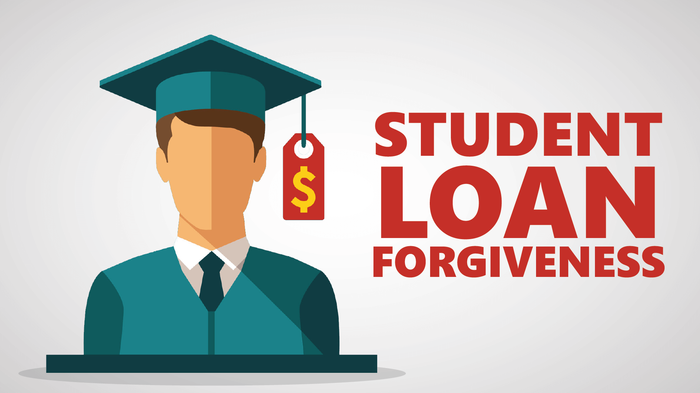Student loan forgiveness is a topic that has gained significant attention in recent years as the burden of student debt continues to weigh heavily on individuals and the economy. If you are navigating the complex landscape of student loans, it’s important to understand the various forgiveness programs available and how they work. In this comprehensive guide, we will answer some frequently asked questions about student loan forgiveness, providing you with the details you need to make informed decisions.
1. What is student loan forgiveness?
Ans: Student loan forgiveness refers to the cancellation of some or all of your remaining student loan balance. It is a program designed to provide relief to borrowers who may be struggling to repay their loans due to financial hardship or other qualifying circumstances. The forgiveness can be granted by the federal government, state governments, or other eligible organizations.
2. Who is eligible for student loan forgiveness?
Ans: Eligibility for student loan forgiveness depends on the specific forgiveness program. The most common programs include Public Service Loan Forgiveness (PSLF), Teacher Loan Forgiveness, and Income-Driven Repayment (IDR) forgiveness. PSLF is available to individuals who work full-time for a qualifying employer, such as a government or non-profit organization, and make 120 qualifying payments while on an eligible repayment plan. Teacher Loan Forgiveness is for teachers who work in low-income schools or educational service agencies. IDR forgiveness is available to borrowers who make regular payments based on their income for a specific period, typically 20 or 25 years.
3. How much student loan forgiveness can I receive?
Ans: The amount of student loan forgiveness you can receive depends on the forgiveness program and the qualifying criteria. Under PSLF, eligible borrowers can have the remaining balance of their Direct Loans forgiven after making 120 qualifying payments. There is no maximum limit on the forgiveness amount. Teacher Loan Forgiveness can provide up to $17,500 in loan forgiveness for highly qualified teachers who meet specific requirements. IDR forgiveness varies based on the repayment plan and the amount of outstanding loan balance after the repayment period.
4. Are private student loans eligible for forgiveness?
Ans: Generally, private student loans are not eligible for federal student loan forgiveness programs. However, some states or private organizations may offer their own loan forgiveness programs for private student loans. It is important to research and inquire about any potential options specific to private student loans.
5. Does student loan forgiveness have tax implications?
Ans: In most cases, student loan forgiveness is considered taxable income. The forgiven amount is reported to the Internal Revenue Service (IRS), and you may receive a Form 1099-C for the tax year in which the forgiveness occurs. It is crucial to consult a tax professional to understand the potential tax implications of student loan forgiveness and plan accordingly.
6. Can student loans be discharged in bankruptcy?
Ans: While it is challenging, student loans can be discharged in bankruptcy under certain circumstances. To do so, you must demonstrate an undue hardship, which typically involves proving that you cannot maintain a minimal standard of living while repaying the loans. The criteria for discharging student loans in bankruptcy are strict, and it often requires filing an adversary proceeding in bankruptcy court.
7. Will student loan forgiveness affect my credit score?
Ans: Generally, student loan forgiveness does not directly impact your credit score. However, if you have been struggling with your loan payments, your credit score may have already been affected. If your loans are forgiven, it can provide relief and allow you to focus on rebuilding your credit and financial stability.
8. Can I apply for multiple forgiveness programs?
Ans: In most cases, you cannot double-dip or receive forgiveness from multiple programs for the same loans. However, you can explore and potentially qualify for different forgiveness programs based on your unique circumstances. It’s important to carefully review the eligibility criteria for each program and choose the one that best suits your needs.
9. How do I apply for student loan forgiveness?
Ans: To apply for student loan forgiveness, you typically need to submit an application to the relevant forgiveness program. The process and required documentation vary depending on the program. It is crucial to gather all necessary paperwork, such as employment certification forms, tax returns, and income verification documents, to support your forgiveness application. It is recommended to contact your loan servicer or the forgiveness program directly to obtain accurate and up-to-date information on the application process.
10. Can student loan forgiveness be revoked?
Ans: In some cases, student loan forgiveness can be revoked if you fail to meet the ongoing requirements of the forgiveness program. For example, under PSLF, if you change employers or repayment plans that do not qualify, you may lose eligibility for future forgiveness. It is crucial to stay informed, maintain compliance with program requirements, and regularly monitor your eligibility status.
Conclusion
understanding the details of student loan forgiveness is essential for borrowers seeking relief from their student loan burdens. By knowing the eligibility criteria, potential forgiveness amounts, tax implications, and application processes, you can make informed decisions and take advantage of available programs. Remember to consult with experts, such as loan servicers and tax professionals, to ensure you navigate the process effectively and maximize your chances of receiving student loan forgiveness.




